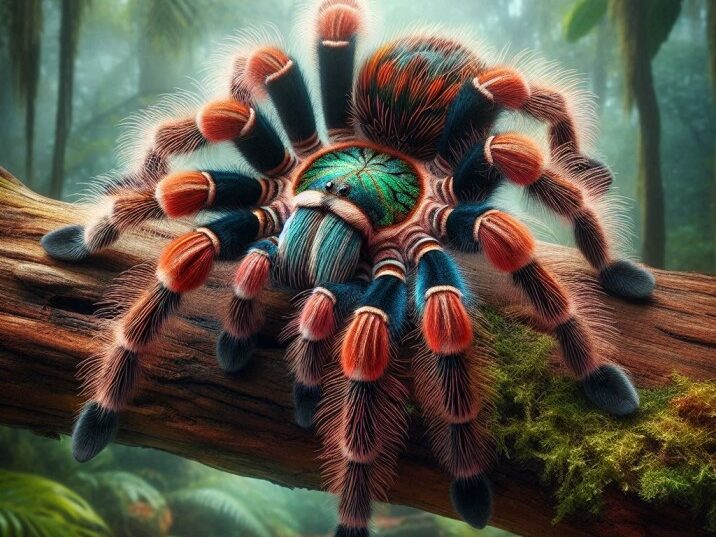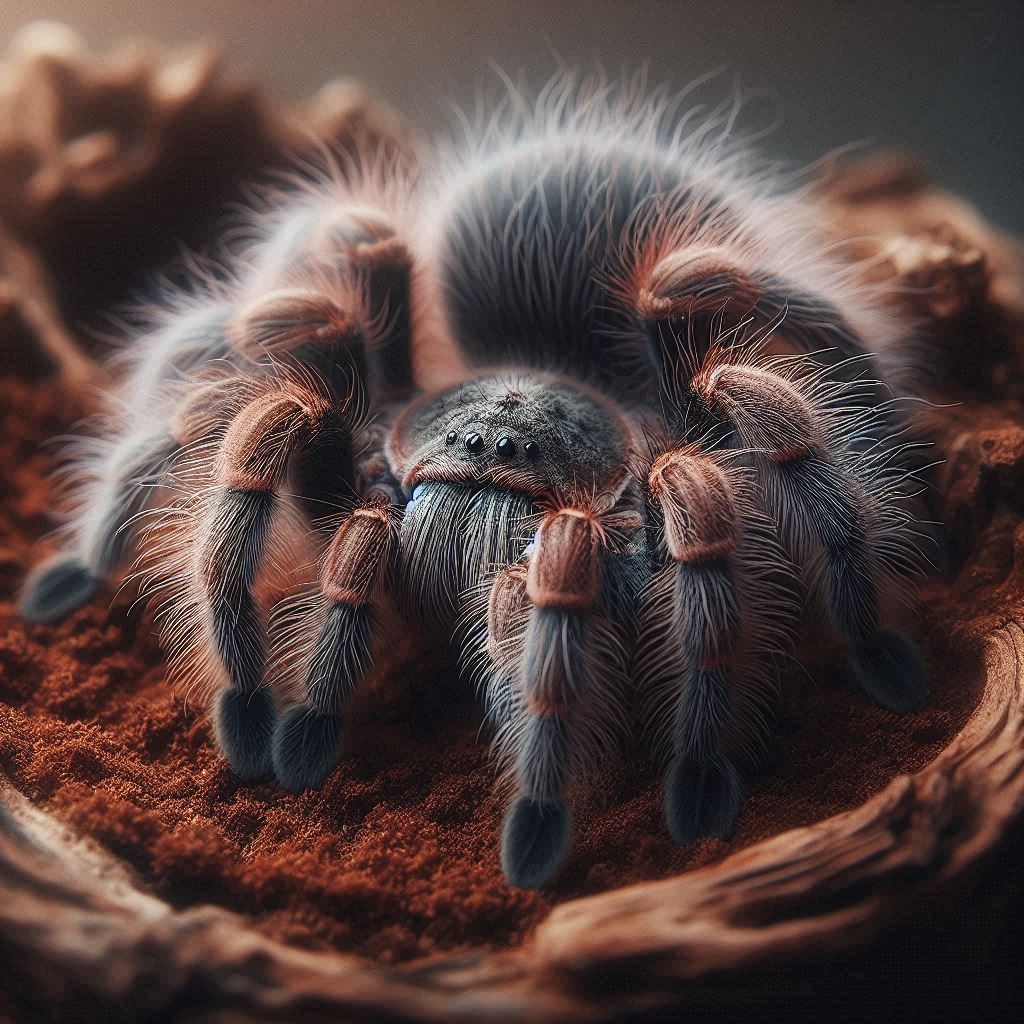Table of Contents
Table of Contents
- Introduction
- Table of Information
- Curly Hair Tarantula Habitat: An Overview
- 3.1 Geographic Range
- 3.2 Climate and Environment
- 3.3 Types of Habitats
- 3.4 Soil and Burrowing
- 3.5 Vegetation and Shelter
4. Curly Hair Tarantula’s Life in the Wild
- 4.1 Diet and Hunting
- 4.2 Predators and Threats
- 4.3 Reproduction and Lifespan
5. Adaptations for Survival
- 5.1 Physical Adaptations
- 5.2 Behavioral Adaptations
6. Curly Hair Tarantula as Pets: Creating the Perfect Habitat
- 6.1 Setting Up the Enclosure
- 6.2 Providing Shelter and Vegetation
- 6.3 Diet in Captivity
- 6.4 Handling and Care
- Conclusion
- FAQs
Introduction
The curly hair tarantula, with its unique frizzy appearance and calm demeanor, has become a favorite among tarantula enthusiasts and pet owners. But have you ever wondered where these fascinating creatures come from and what their natural habitats are like? Understanding their habitat is crucial not only for those who wish to care for them but also for anyone interested in the natural world. This guide will take you on an exciting journey into the world of the curly hair tarantula, exploring their habitats, behaviors, and the ecosystems they thrive in.

Table of Information
| Feature | Details |
|---|---|
| Scientific Name | Tliltocatl albopilosus |
| Common Name | Curly Hair Tarantula |
| Native Regions | Central America, mainly Costa Rica and Nicaragua |
| Habitat Type | Tropical rainforests, grasslands, and semi-arid regions |
| Temperature Range | 75-85°F (24-29°C) |
| Humidity Levels | 65-85% |
| Burrowing Behavior | Yes, primarily burrowers |
| Diet in the Wild | Insects, small mammals, and amphibians |
Curly Hair Tarantula Habitat: An Overview
Geographic Range
They are primarily found in Central America, specifically in Costa Rica and Nicaragua. These regions offer the perfect blend of tropical climate and diverse ecosystems, which are essential for the tarantula’s survival.
Climate and Environment
Curly hair tarantulas thrive in tropical climates characterized by warm temperatures and high humidity. They are commonly found in areas with temperatures ranging from 75-85°F (24-29°C) and humidity levels between 65-85%. These conditions are critical for their molting process and overall health.
Types of Habitats
Curly hair tarantulas are versatile creatures that can adapt to various types of habitats. Their preferred habitats include:
- Tropical Rainforests: These dense, humid forests provide ample cover and moisture, which are ideal for tarantulas.
- Grasslands: Open areas with sufficient vegetation and soil for burrowing.
- Semi-Arid Regions: Areas with less vegetation but still enough moisture to support their needs.
Soil and Burrowing
One of the most fascinating aspects of these tarantula’s habitat is their preference for burrowing. They favor loose, well-drained soil that allows them to create extensive burrow systems. These burrows offer protection from predators and extreme weather conditions.
Vegetation and Shelter
The vegetation of these tarantulas varies depending on the specific location. In tropical rainforests, they are surrounded by dense foliage, while in grasslands, they might find shelter under rocks and fallen logs. This vegetation not only provides cover but also attracts prey, making it easier for tarantulas to hunt.
Curly Hair Tarantula’s Life in the Wild
Diet and Hunting
They s are carnivorous and primarily feed on insects. In their natural habitat, they hunt crickets, beetles, and other small invertebrates. Occasionally, they may capture larger prey such as small mammals and amphibians. They rely on their keen sense of touch to detect vibrations and locate their prey.
Predators and Threats
Despite their formidable appearance, curly hair tarantulas have several natural predators. These include birds, snakes, and large mammals. Their primary defense mechanism is their ability to burrow and hide. They may also use their urticating hairs to deter predators.
Reproduction and Lifespan
In the wild, they have a fascinating reproductive cycle. Males reach maturity around 2-3 years of age, while females mature a bit later. After mating, females lay hundreds of eggs, which they protect fiercely until they hatch. The average lifespan of a curly hair tarantula in the wild is 10-15 years, although some individuals may live longer.
Adaptations for Survival
Physical Adaptations
These has several adaptations that help it survive in its natural habitat. These include:
- Curly Hair: The distinctive curly hair on their bodies helps them blend into their surroundings, providing camouflage from predators.
- Strong Legs: Their powerful legs enable them to burrow and navigate through dense vegetation.
- Venom: While not harmful to humans, their venom is effective in subduing prey and deterring predators.
Behavioral Adaptations
They exhibit several behaviors that aid in their survival:
- Burrowing: By creating burrows, they protect themselves from predators and extreme weather.
- Molting: Regular molting allows them to grow and replace damaged or lost limbs.
- Nocturnal Hunting: They primarily hunt at night, reducing the risk of encountering predators.
Curly Hair Tarantula as Pets: Creating the Perfect Habitat
Setting Up the Enclosure
For those who wish to keep these tarantula as a pet, creating a habitat that mimics their natural environment is crucial. Here are some tips for setting up an enclosure:
- Terrarium Size: A 10-gallon tank is sufficient for an adult tarantula.
- Substrate: Use a mix of coconut fiber and soil to create a loose substrate for burrowing.
- Humidity: Maintain humidity levels between 65-85% by misting the enclosure regularly.
- Temperature: Keep the temperature between 75-85°F (24-29°C) using a heat mat or lamp.
Providing Shelter and Vegetation
Adding hiding spots such as cork bark or half logs will give your tarantula a sense of security. Live plants can help maintain humidity levels and make the enclosure more natural.
Diet in Captivity
In captivity, curly hair tarantulas can be fed a diet of crickets, mealworms, and occasional pinkie mice. Ensure that the prey is appropriately sized and not too large for the tarantula to handle.
Handling and Care
Curly hair tarantulas are generally docile and can be handled with care. However, it’s essential to respect their space and avoid excessive handling, which can stress the tarantula.
Conclusion
The curly hair tarantula is a remarkable creature that thrives in a variety of habitats across Central America. Understanding their natural environment is not only fascinating but also essential for providing proper care in captivity. By recreating a habitat that closely resembles their wild surroundings, you can ensure that your tarantula remains healthy and happy. Whether you’re an enthusiast or a pet owner, the curly hair tarantula’s habitat offers a glimpse into the incredible adaptability and beauty of these unique arachnids.
FAQs
- What is the native habitat of the curly hair tarantula?
- The curly hair tarantula is native to Central America, primarily found in Costa Rica and Nicaragua.
- What kind of environment do curly hair tarantulas prefer?
- They prefer tropical rainforests, grasslands, and semi-arid regions with warm temperatures and high humidity.
- How do curly hair tarantulas hunt for food in the wild?
- They hunt by sensing vibrations in the ground and primarily feed on insects, small mammals, and amphibians.
- What are the primary threats to curly hair tarantulas in the wild?
- Their main predators include birds, snakes, and large mammals. They use burrowing and their urticating hairs for defense.
- Can I keep a curly hair tarantula as a pet?
- Yes, curly hair tarantulas can be kept as pets, provided you create an enclosure that mimics their natural habitat and meets their needs for temperature, humidity, and diet.

